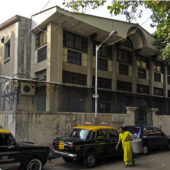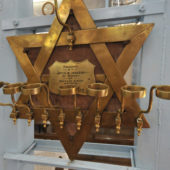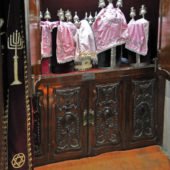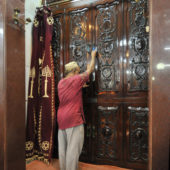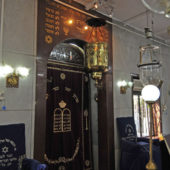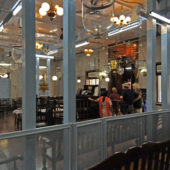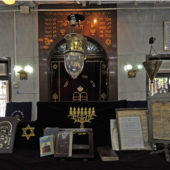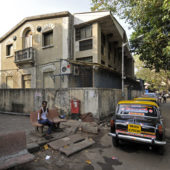The Bene Israel Community bought the “Rosh-Del-Villa” premises in 1923 and converted it into the Tiphereth Israel Synagogue, which opened in 1924. It was known as “Kandleharachi Mashid” (Kandlekar’s Synagogue) in the local language of Marathi due to the service of the late Aaron Kandlekar to the synagogue.
For centuries, Jews in India met and prayed together in temporary structures or members’ homes. The synagogues they eventually built varied significantly in terms of size, style, and overall appearance. Bene Israel Jews, who settled in Mumbai or Pune in the late 18th century or early 19th century, are the largest of the three groups of Indian Jews. They constructed synagogues of various styles, including Art Deco and Colonial influences. The Tiphereth Israel Synagogue is an Orthodox Bene Israel synagogue.
Tiphereth Israel Synagogue is one of the older synagogues in Mumbai. The congregation initially rented a building in 1886. By 1923 the congregation had grown to 200 members. They purchased the ‘Rosh-Del-Villa’ premises at Jacob Circle. Renovation was completed in 1924 and the Synagogue was initially called the Jacob Circle Prayer Hall. It is also presently known as Kandlekaranchi Mashid, (Kandlekar’s Synagogue) in the local language of Marathi, due to the service of the late Aaron Kandlekar to the Synagogue. In addition to remodeling the Rosh-Del-Villa premises the community acquired the adjacent bungalow and recently, another prayer room of approximately 2500 square feet was built. Sabbath services are conducted in the community hall, where religious studies and various other activities take place. The congregation recently celebrated its 125th anniversary with the inauguration of a mikvah (ritual bath). Today, there are approximately 5,000 Jews in India, 4,000 are in Mumbai.
The façade of the Synagogue is an elevated concrete modern structure, with several windows along the west wall. Inside the gray-walled purpose-built prayer room, are light blue beams and columns, with windows flanking either side of the Aron Kodesh on the west wall. The unusual Aron Kodesh is inset into a dark brown section of the wall inscribed with Hebrew writing and symbols inscribed in gold. The arched inset reveals the ornately hand-carved, dark wood Aron Kodesh, with the maroon Torah curtain drawn across it, featuring Hebrew writing and symbols in gold embroidery. Inside the Aron Kodesh, the Synagogue boasts a collection of nine Sefer Torahs kept in wooden cases with ornamental silver scroll handles. Beautiful lamps and incense burners drop down in front of the Aron Kodesh. Drop lanterns and chandeliers light the sanctuary. The bimah sits in the center of the sanctuary, surrounded by a dark wood balustrade, with the tivah (reader’s desk) inside. A low, light blue partition situated towards the northern end of the prayer room separates the women’s gallery. Dark brown wood benches sit on terracotta flooring.

